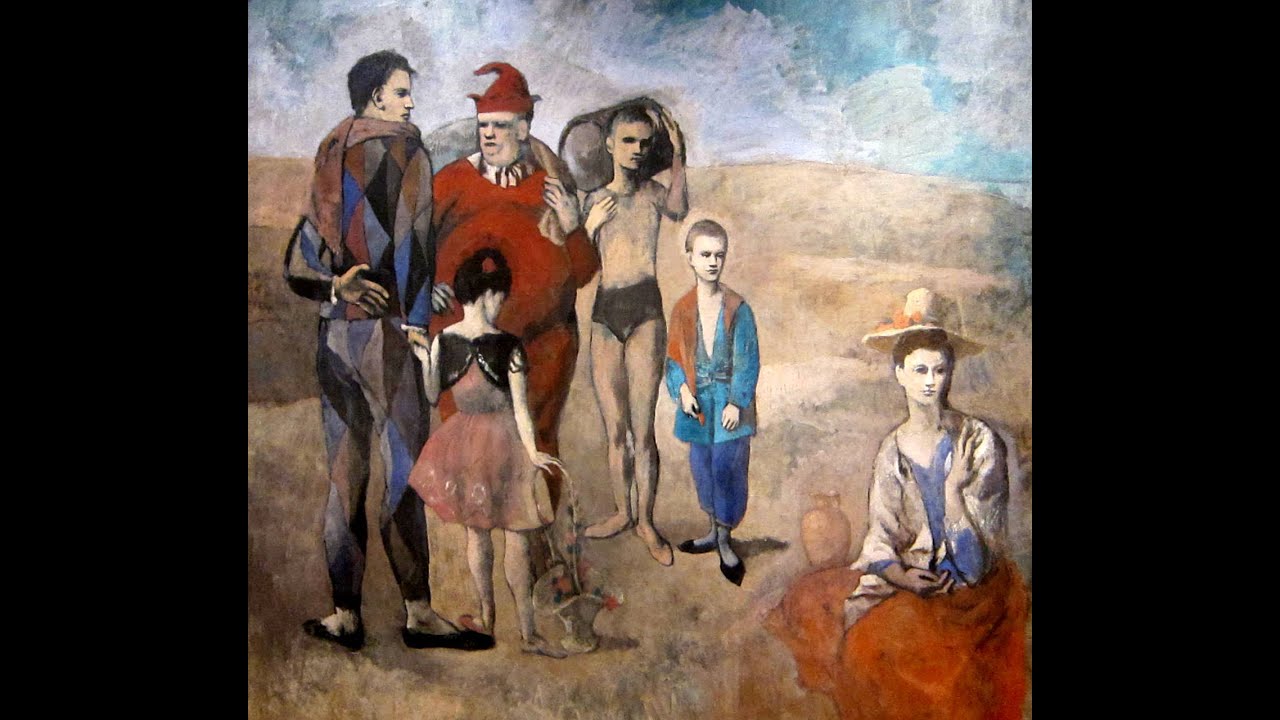
Robert Draws – Family of Saltimbanques (1905) is one of Pablo Picasso’s most iconic works. The painting represents a moment of transition in Picasso’s career. This masterpiece is part of his Rose Period. The painting shows a group of circus performers, reflecting a mix of melancholy and vulnerability. Through this artwork, Picasso captures the emotional depth of the human experience. Family of Saltimbanques also reveals Picasso’s ability to explore isolation within the public sphere. This period is significant for the shift in Picasso’s use of color and subject matter. The artwork captures themes of loneliness and the quiet sadness that performers often experience.
Picasso’s Rose Period lasted from 1904 to 1906. It followed his Blue Period, which was marked by sadness and somber tones. The Rose Period, however, introduced warmer hues like pinks and oranges. Despite these warmer tones, the emotional themes in Picasso’s work remained intense. Family of Saltimbanques reflects the duality of this period. The figures in the painting are clothed in vibrant, soft colors, yet their faces convey profound sadness. The tension between color and emotion is evident in this piece. Picasso uses the circus performers as symbols of vulnerability and isolation.
“Read about: Pointing to the Divine: Interpreting St. John the Baptist”
The central figures in Family of Saltimbanques represent various circus performers. They include a harlequin, a female acrobat, and a few other performers. Each figure appears disconnected from the others. The harlequin, often associated with sadness in Picasso’s works, stands as the main figure in the painting. The harlequin’s posture and expression suggest a sense of emotional detachment. He stands apart from the group, emphasizing his isolation. The other characters are also shown in subdued postures. Their gazes suggest a lack of engagement with their surroundings. These performers, typically symbols of joy, are presented with an air of quiet melancholy. The characters’ expressions evoke empathy and understanding.
The circus, a recurring theme in Picasso’s works, symbolizes both the entertainment and the loneliness of performers. Family of Saltimbanques portrays a group of performers who are removed from the usual exuberance of the circus. The group’s melancholic mood suggests a deeper reflection on the emotional toll of their lives. Picasso’s interest in the circus began in his early years. He was fascinated by the paradox of performing for a crowd while feeling isolated personally. Family of Saltimbanques demonstrates this theme of duality, as the performers appear to be out of place in the public eye. Their sadness suggests that their lives are not as joyful as their performances may indicate.
Picasso’s color palette during the Rose Period is softer compared to the Blue Period. He uses hues like pinks, reds, and oranges in Family of Saltimbanques to create a warmer atmosphere. These colors contrast with the emotional depth of the painting, highlighting the difference between outward appearances and inner feelings. The use of space in the painting emphasizes the isolation of the characters. The figures in the composition spread out, adding to the feeling of loneliness. Their postures and gazes, along with the empty space around them, create a sense of distance. This separation portrays the disconnect between the performers and their audience.
“Read more: Project Hope for the Homeless: Combating Trafficking Among Vulnerable Populations”
Despite the vibrant color scheme, Family of Saltimbanques is deeply emotional. The sadness conveyed by the characters transcends the bright hues that dominate the canvas. Each figure appears to be lost in their own thoughts, disconnected from one another. Picasso’s ability to express emotional depth through simple gestures and expressions is evident here. The performers are not just representations of joy; they symbolize the inner turmoil of those who perform for others. Their emotional vulnerability is what makes the painting so powerful. Picasso uses the simplicity of their forms to convey complex emotional themes.
Family of Saltimbanques is a significant work in Picasso’s career. It marks a pivotal moment in his artistic evolution. The painting exemplifies the emotional complexity of the Rose Period. It also demonstrates Picasso’s growing mastery of portraying human emotion. The work continues to resonate with viewers today because of its timeless themes. The painting reflects not only the loneliness of performers but also the universal experience of feeling disconnected. As such, Family of Saltimbanques remains an iconic piece in the history of art.